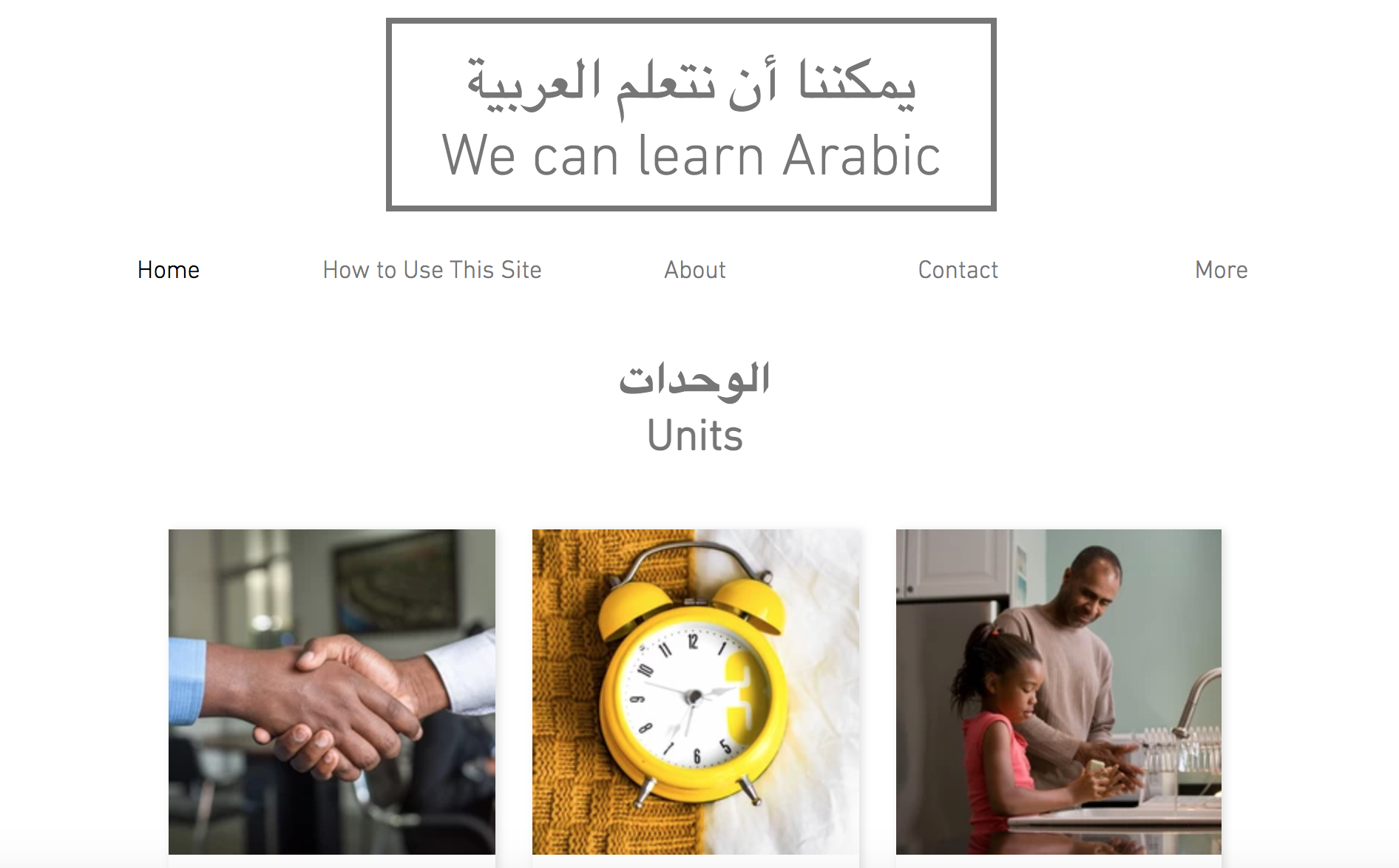Last Fall, I mentioned that my colleagues Heather Sweetser, Abdullah Serag, and I had launched We Can Learn Arabic, an open access website for Arabic learners at beginning and intermediate levels. This is the culmination of six years of moving away from a textbook in our lower level classes, as well as many of the research inspirations I’ve discussed on this blog, including multilingual and genre-based approaches and genre-based approaches. We’ve now been using the website in our classrooms for almost 1.5 semesters, so I thought I’d give an update on how it’s worked, improvements we’ve made, and plans for the future.
How has it worked?
Overall, better than I even anticipated! Although students like some units better than others, they definitely prefer the site overall to using a textbook. The thematic units are helpful for focusing on a particular topic, and grouping texts by language function (or can-do statement) really allows students to focus on improving their ability to do that function, as we repeat it several times with different texts. As far as the texts go, partnering with Playaling has been a great success, as it allows students to benefit from texts that might be slightly above their level, or in a variety of Arabic they are less familiar with. From a teacher perspective, it’s been great to see students really develop their language abilities in a focused manner, and especially some of the creative memes they’ve produced for various assessments!
Improvements we’ve made
As we’ve tested the site in our classes, we’ve made numerous improvements based on student feedback and our own observations. This includes adding transcripts for videos (so students can follow along, especially if they aren’t in Playaling), and separating out the vocabulary and grammar lists (even though the grammar was listed first, students tended to skip right past it to the vocabulary). As many of the vocabulary lists were long, we also added a “Top 9 Quizlet” where we selected the nine terms we thought most important, and incorporated them into a set of Quizlet flashcards students can study. Crucially from a research perspective, the flashcards include the full sentence/context, rather than isolated words. Finally, we removed the reflection from each applying activity (it was too much and not different enough each time), but added more extensive reflection materials at the end of each assessment, including space for students to plan out what activities they are going to do to make the improvements they want, and when they are going to do them. We also split up our assessments, with unit assessments that are more focused on combining the can-do statements, and can-do assessments more focused on that particular language function. As we’ve made these improvements as we go, not all of the units are updated in this fashion, but that brings us to plans for the future!
Plans for the future
In this and other curriculum development endeavors, we are a small team that has to fit these efforts into our regular workload, and so we’ve developed a system to track what we’ll focus on now, and what we will address in future iterations. This has allowed us (over the course of six years) to move from relying solely on a textbook to having our own open-access website, bit by bit. This academic year, our goal was to simply get all of the materials on the website, with enough units for our first two years of classes (and given the challenges of this year, I’m frankly still kind of surprised we did it). Other ideas are saved for the future, and these range from the major (including an interactive alphabet book (or maybe app), project options for each unit, moving to a better website builder, including a wider range of dialects) to the more minor (adding more units, finding all the typos and broken links, updating all of the units to a consistent format).
If you’re an Arabic teacher or learner who has used this site, we’d love to hear from you with comments or suggestions! You can comment below, email me at emmatrentman@gmail.com, or use the “contact us” option on the We Can Learn Arabic site.
